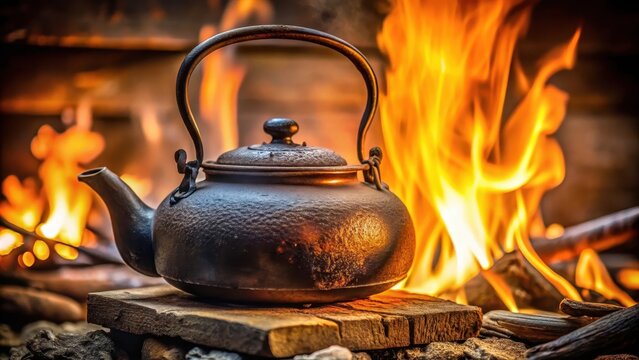When equipping your kitchen, choosing the right kettle is crucial not just for your cooking efficiency but also for complementing your kitchen aesthetics. The classic debate Cast Iron Kettle versus Stainless Steel Kettle sparks much interest among cooking enthusiasts. In this comprehensive guide, we will explore both options in depth, helping you determine which type suits your needs best.

Introduction to Kettles
Kettles are indispensable tools in any kitchen, and selecting the right one can elevate your cooking experience. The question of whether a Cast Iron Kettle is superior to a Stainless Steel Kettle often depends on individual needs and preferences. Both have unique properties that are worth considering.
Understanding Material Composition
What is a Cast Iron Kettle?
Cast iron kettles are known for their ability to retain heat effectively, making them perfect for tasks that require steady heating. These kettles have a rustic charm and often last for generations with proper care. Learn more about maintaining them here.
Benefits of Stainless Steel Kettles
Stainless steel kettles offer a modern aesthetic appeal and are prized for their durability and resistance to rust. Their lightweight nature makes them convenient to handle, and they heat up quickly, which is ideal for busy kitchens.
Heat Distribution and Retention
The ability of a kettle to distribute and retain heat can greatly affect your culinary results. Cast iron is renowned for its superior heat retention, while stainless steel excels in quick heat-up time. Depending on your cooking needs, this could be a significant deciding factor.
Durability and Lifespan
One of the biggest advantages of a cast iron kettle is its durability, often outlasting its stainless steel counterpart when properly maintained. You can discover DIY maintenance tips for extending the life of your kettle here.
Maintenance and Cleaning
Cleaning a Cast Iron Kettle
Caring for a cast iron kettle involves ensuring it is thoroughly dried after each use to prevent rusting. Periodic seasoning is also suggested to maintain its non-stick surface.
Caring for a Stainless Steel Kettle
Stainless steel kettles are relatively low maintenance. A simple clean with soapy water is generally sufficient, and they can withstand frequent use without damage.
Cost Comparison
Budget is another crucial factor. Cast iron kettles are usually more expensive upfront, but their longevity can make them cost-effective in the long run. Stainless steel kettles are often less expensive initially, catering to those with tighter budgets.
Environmental Impact
Choosing eco-friendly cookware is increasingly important. Cast iron is recyclable and less energy-intensive to produce. Stainless steel also has recycling potential, contributing to sustainable kitchen practices.
Versatility in the Kitchen
Both kettles can serve multiple purposes, from boiling water to cooking soups. The weight of a cast iron kettle adds stability, whereas the lightweight nature of a stainless steel kettle allows for easy maneuverability, making it perfect for small, cluttered spaces.
Popular Brands and Options
When selecting a kettle, consider trusted brands known for quality and reliability. You might find useful comparisons in brands like Coleman and Camp Chef here.
Customer Reviews and Recommendations
Reading customer feedback can provide insights into real-world performance. Many users appreciate the durability and rustic appeal of cast iron, while others enjoy the sleek, modern design of stainless steel.
Style and Aesthetic Appeal
The choice between rustic charm and modern minimalism can influence your decision. Cast iron kettles often have a timeless, classic look that adds character to any kitchen, whereas stainless steel kettles complement contemporary designs effortlessly.

FAQs
Can I use a cast iron kettle on all stovetops?
Yes, most cast iron kettles are compatible with all stovetops, including induction. Always check manufacturer specifications for confirmation.
Are stainless steel kettles energy efficient?
Yes, stainless steel kettles heat up quickly, often making them more energy-efficient for quick boiling.
Which kettle is better for making tea?
Both are excellent, but a cast iron kettle might be preferable for those who enjoy a prolonged steeping process due to its heat retention.
This article contains affiliate links. We may earn a commission at no extra cost to you.

